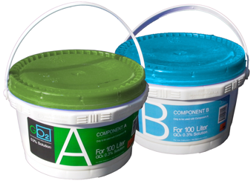About Chlorine DioxideHistory of ClO2 in the United StatesChlorine dioxide has been used in drinking water since 1944. Its major advantage was considered to be in taste-and-odor control, although its disinfection capabilities were also recognized. Later on, it became more and more common as a disinfectant and is now used in many industries, including potable water, waste water, effluent water, the oil & gas industry, paper & pulp industry, cooling towers, pipeline and tank cleaning, poultry and livestock raising, post-harvest fruit and produce washing, horticulture, carcass washing, brewing and beverage production. During the 1960s and 1970s, many facilities abandoned the use of ClO2 because of equipment or installation design problems or high chemical costs. Some equipment failed because of the corrosive nature of highly alkaline concentrated sodium chlorite precursor solutions. Other reasons these systems were shut down include poor conversion of the precursor chemicals into chlorine dioxide, gross contamination of the ClO2 solutions with high chlorine levels, or inadequate dose control. Some ClO2 generation systems needed twice the theoretical (stoichiometric) amount of chlorine for acceptable conversion, and the resultant excess chlorine levels were high enough to negate any beneficial effects of the ClO2. 
GO2 is an advanced delivery system to generate chlorine dioxide with a purity of 95+%. GO2 does not generate chlorine, chlorate, chlorite or chloride. The active biocidal substance is chlorine dioxide (ClO2). GO2 is 10 x more powerful than chlorine (and chlorine type disinfectants), works at a broad pH-range from 4-10 and does not generate any by-products or side effects when formed. Although equipment has improved over time, it is still extremely difficult to make a 95+% pure ClO2 with the old fashioned methods of generation. Most chlorine dioxide systems generate harmful by-products. These can include TriHaloMethanes (THM's), Haloacetic acids (HAA's), bromides, bromines and Mutagen X (MX). These are all known to be carcinogenic and a risk for human health.
|